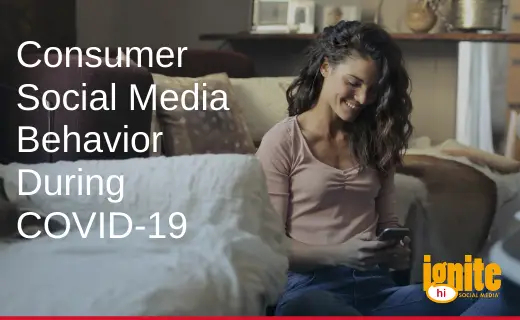
09 Apr Survey Results: How Social Media Behavior Has Changed with COVID-19
In the midst of the COVID-19 pandemic, consumers across the world are struggling to find “the new normal.” With that, brand marketers are trying to figure out how to adapt their social strategies to new social media behaviors.
Key Takeaways
- Running paid media is ok during this time, but make sure your messaging is sensitive
- While networks are reporting higher than normal usage, social media users are sticking with what they know and not spending time on new channels
- Despite spending more time on social, users report they are posting the same or less than they did before
- While users feel it’s okay for brands to run ads, their quarantine status has an impact on what they want to hear from brands right now
- Most users appreciate brands providing practical and informative tips to help deal with the situation
- Older users are spending more time on Facebook and YouTube, while younger users are spending more time on TikTok and Twitter
Social Media During Covid-19 Survey Results
As the easiest form of marketing to change on the fly, social media marketing has become one of the most popular ways for not only people to stay connected to other people, but for brands to reach their audiences. And now that strategies have changed and things are beginning to settle, we wanted to understand exactly how things have shifted, and more importantly, will these trends continue in the wake of the coronavirus.
Our team surveyed over 600 consumers at the beginning of April to gauge their opinions on social media marketing tactics and how their social media behavior has changed. As you move forward with your social media efforts, be sure to take into account these consumer insights to help strengthen your strategy and your connection with consumers.
How Consumers Feel About Social Media Ads in Light of the Pandemic
One of the top questions marketers have been asking throughout this crisis is, “should they continue running social media ads?” We asked consumers their thoughts on the matter and 2/3 of respondents said they think it’s okay, for at least some brands, to continue advertising on social media.
Notice the word some.
In the chart below, you can see how that breaks down, as 26.1% said brands must be sensitive to the current climate with their ads, while 19.1% said only if the brand’s product was “essential.” Then again, nearly 1/3 of respondents said it was okay for brands to advertise with no caveats.
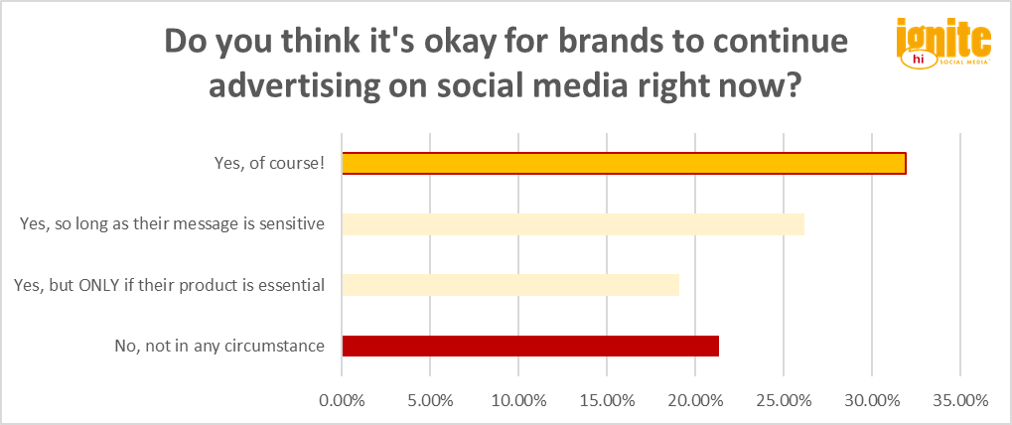
GlobalWebIndex also did research around advertising during COVID-19. Globally, about 50% say they approve of brands running “normal” advertising campaigns that aren’t linked to coronavirus. Only 20% express disapproval, which is right in line with the 21% of respondents who felt the same in our survey.
The highest approval comes for brands providing practical and informative tips to help deal with the situation, followed by campaigns that show how they are responding to coronavirus and helping customers.
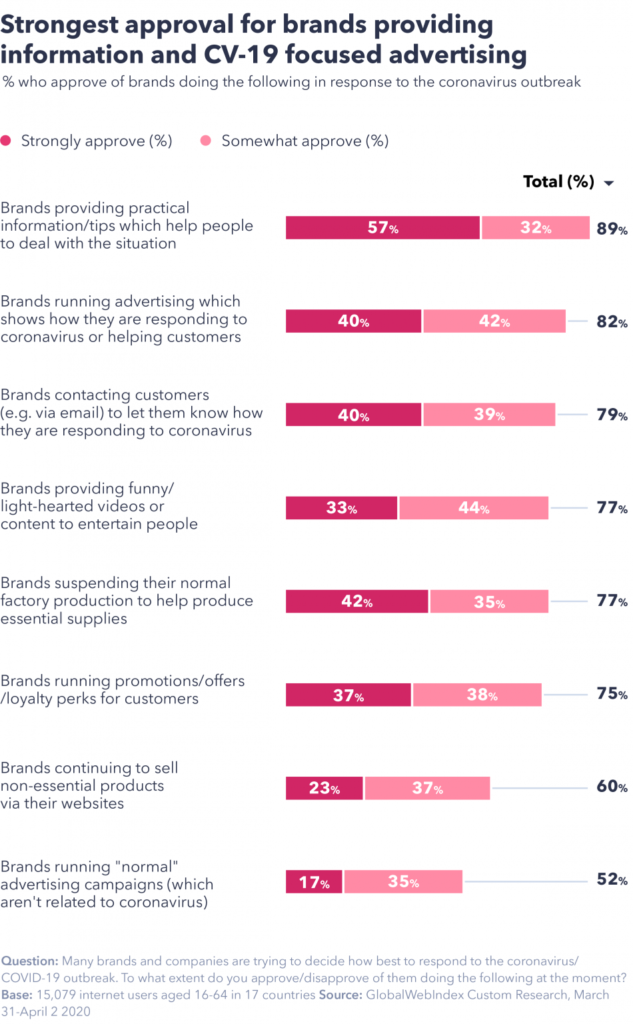
So what does this mean for you? Think about what you’re selling. Is your product one consumers are open to buying right now? More importantly, think about the message you’re pushing with your ads. Paid media costs are incredibly low right now, so as long as you’re mindful and monitor your ads on a daily basis, chances are you won’t run into any issues.
Where Consumers Are Spending Their Time on Social Media
Regardless of if you’re running ads or organically posting, it’s important to know where your target audience is and what social media activities they may be partaking in. Despite all the major social networks reporting increased activity as more people are forced to stay home, the majority of users reported they have not started using any new social media channels (70%).
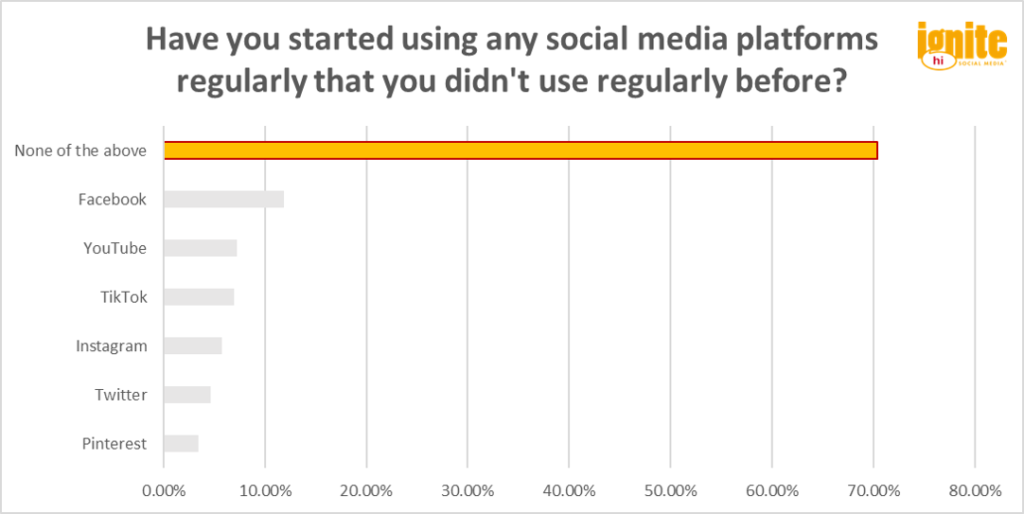
However, 20% of respondents in the 25-34 age bracket reported spending more time on TikTok, while 14% reported more time on Twitter. This could mean there’s more opportunity for brands to invest in advertising opportunities on TikTok as users with more buying power gravitate to the app.
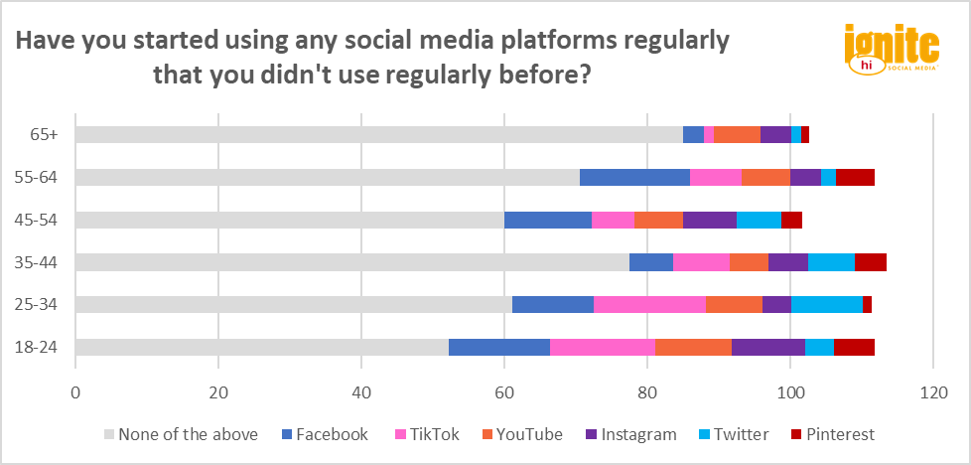
Meanwhile, our older survey respondents (45-64) who reported an increase in usage are spending their increased time on Facebook and YouTube.
Finally, if you’ve been trying to find a way to leverage Facebook Groups or LinkedIn Groups for your business, now might be the time. Nearly 1/4 of respondents have joined new groups on social media as a result of the pandemic, the majority of those joined in an effort to stay up-to-date on COVID-19 information.
Interestingly, young people (aged 18-24) were 2x more likely than any other age bracket to join new groups to keep up with information about COVID-19, an indicator that this group is turning to social first for news and information.
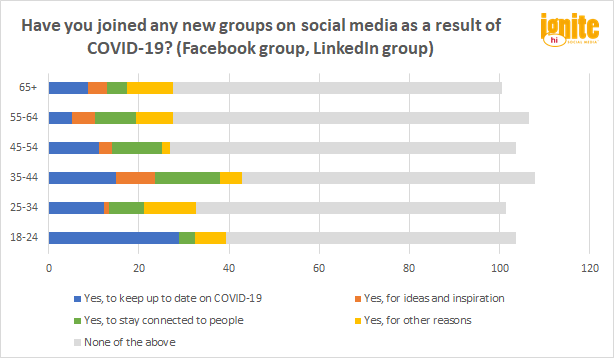
Just in time for this new group activity, Facebook launched new tools for groups to ensure members are getting accurate COVID-19 information. These new tools include an educational pop-up which will direct members to Facebook’s COVID-19 information center, prompting to the admins of COVID-19 related groups as for when official health authorities are going live with updates, so that they can re-share the relevant Facebook Live broadcasts with their groups and new materials for its learning units for groups. This enables group admins to provide a dedicated space for COVID-19 educational tools within their communities.
Finally, while time spent on social is up and some users are reportedly spending time on channels they didn’t frequent before, they’re not creating more content themselves. Just 14% of users reported creating more content, while 21.4% of respondents reported that they’re sharing and creating less content.
What Consumers Want to Hear from Brands in Light of COVID-19
Now that we know where people are, it’s important to understand what they want to see on social from brands. We’re observing most brands either going completely dark during this time or sharing content that’s informative (how they’re protecting employees/customers, updates on product availability, store hours, etc.), or helpful inspiration (ideas, recipes, etc.) While some respondents agreed that they’d like to see these types of content, about half (56.7%) said they wanted to hear none of the above from brands.
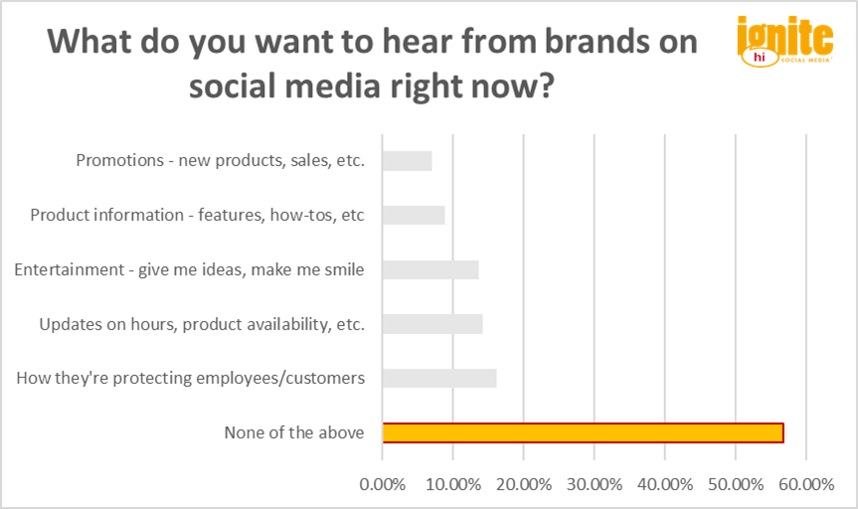
However, for the remaining 43.3% of people who do want to hear from brands, their social distancing status appears to impact what they want to hear about.
It’s also important to remember who your audience is, as what people want to hear differs according to both their age group and their quarantine status.
For example, while many age groups are open to entertaining updates, young millennials (aged 25-34) are clearly not into it.
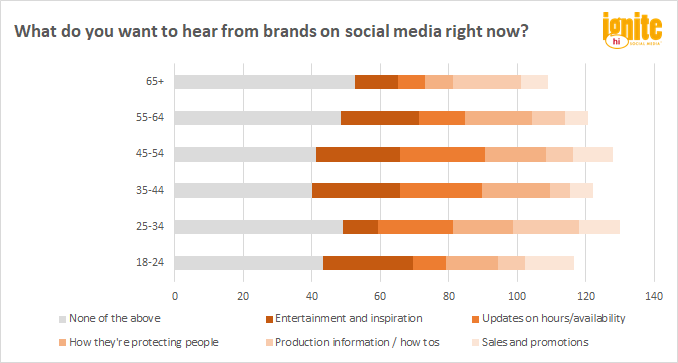
In terms of quarantine status, those who have been formally quarantined are mostly likely to seek brand updates and 36% of them want to be entertained. Meanwhile, medical and civil service workers are most eager for updates on hours and product availability.
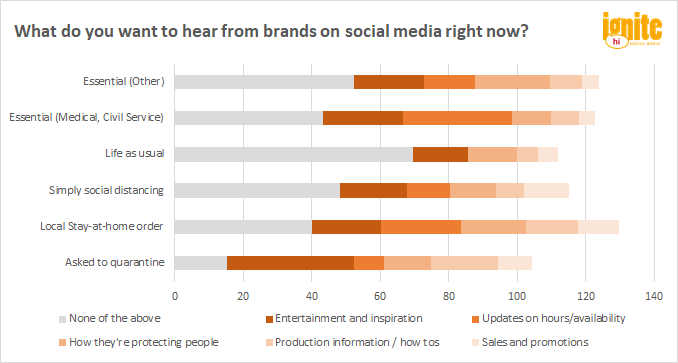
Should my brand go dark in light of COVID-19?
The short answer is, it depends. We discussed questions like this and others in our live Q&A with brands in late March.
But the answer is certainly not a resounding yes. While 56.7% of people say there’s nothing among the list of things we’re seeing brands post that they do want to hear, the other half is looking for such information. And, more than 60% of people surveyed also reported they haven’t seen anything from brands that turned them off. Those that have been turned off are reporting concerns over price gouging, ads for travel, and brands advertising the sale of personal protective equipment (PPE).
If you have questions about your social media marketing efforts during COVID-19, please fill out the form below to get in contact with us:







